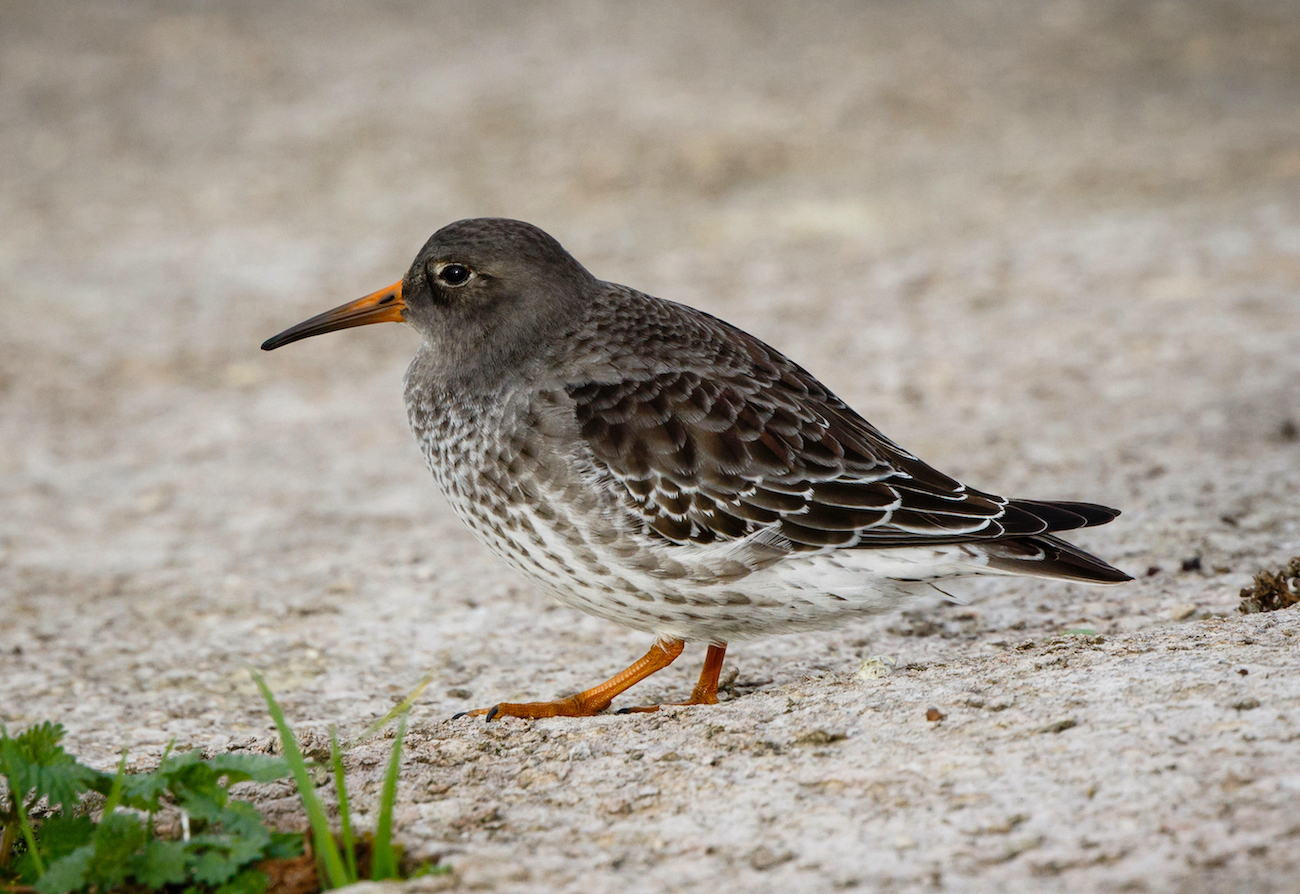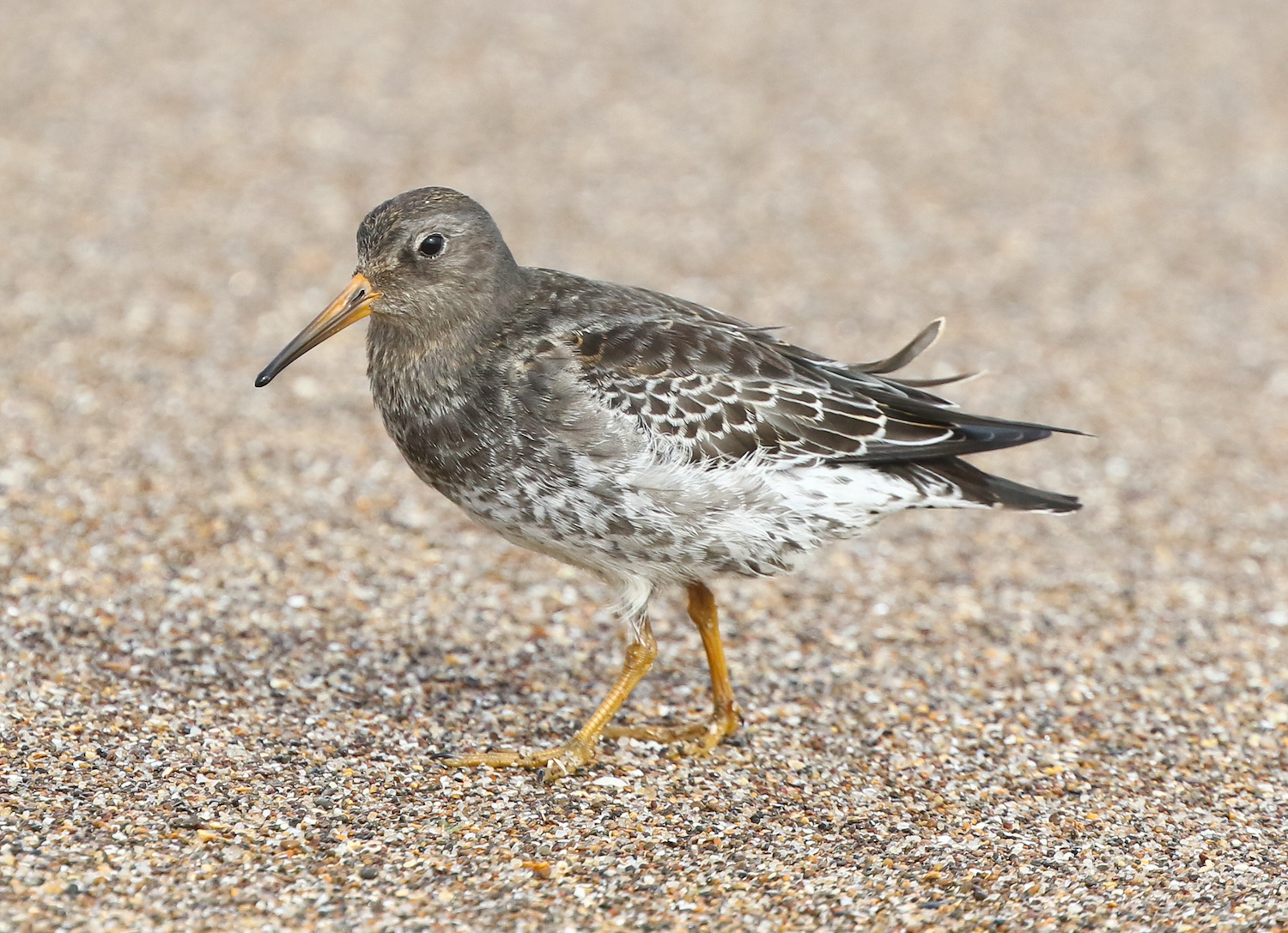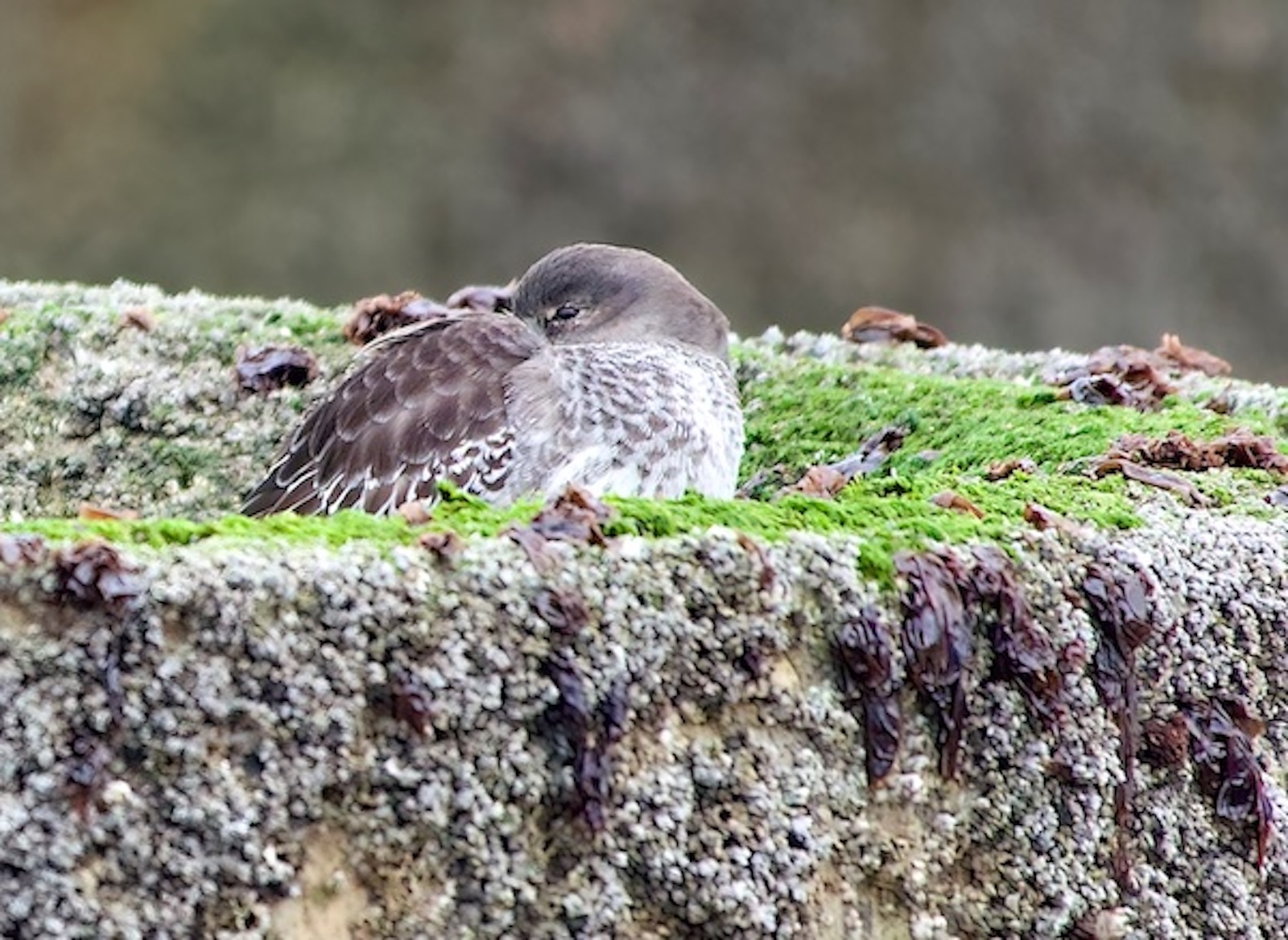Purple Sandpiper Calidris maritima
Very scarce/scarce passage migrant and winter visitor, mainly coastal.



Smith and Cornwallis (1955) described Purple Sandpipers as rare and irregular autumn and winter visitors and cited only three 'recent' records of two at Cleethorpes, February 5th, 1949, and singles at Gibraltar Point on April 14th, 1950 and August 12th, 1953. Most records refer to autumn migrants which turn up from early August until early November (Lorand and Atkin 1989), and the Atlas suggested average numbers were around 11 birds per year in the 1980s and 6-7 in the 1990s. With no natural rocky shores and very few artificial ones, Lincolnshire has little to offer for Purple Sandpipers. The only sites recording them with any degree of regualrity are the stony banks at the Witham Mouth, on the concrete groynes at Trusthorpe and Mablethorpe, and the rocky edges to be found along Cleethorpes seafront.
The 25-year long term trend for UK wintering “Purps” is down 50% according to Frost et al 2020 in the Waterbirds in the UK report, 2018-19. In the 5-year period to 2018 LBR reported around 38 birds or 7-8 per year, very much in line with previous Lincolnshire experience. Annual totals ranged from three in 2015 to 12 in 2017 and 2018. Of the 38, 11 were wintering birds, five were seen in spring and 22 in autumn. The only winter long stayers, as in many previous years, were at Cleethorpes. Two reports were of inland birds, both at Covenham Reservoir. A remarkable ringing recovery concerns a bird ringed at Donna Nook on October 24th 1983 and retrapped on May 2nd 1984 at a coastal site in Sweden. It was seen again in almost exactly the same place on March 9th 1987 when it's ring was read in the field. Taking a wider look at ringed birds seen or retrapped in the UK, most have been trapped in Finland, Greenland, Iceland, Norway, Svalbard and Sweden. Another long-lived shorebird, the oldest recorded in the BTO ringing scheme was just over 15 years old when last retrapped in Scotland in 1997.
(Account as per new Birds of Lincolnshire (2021), included September 2022)
